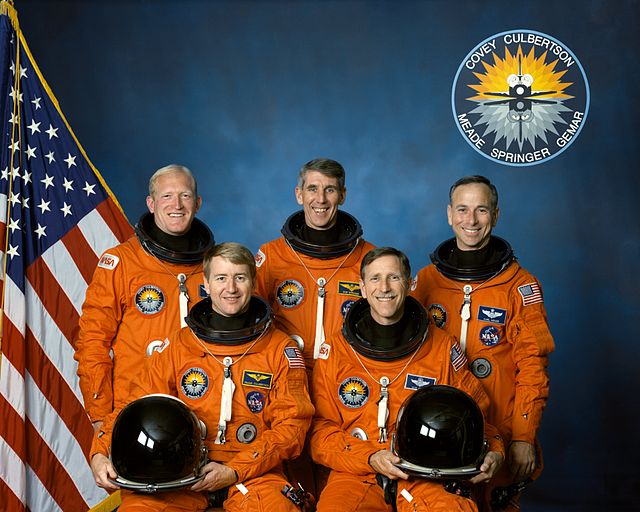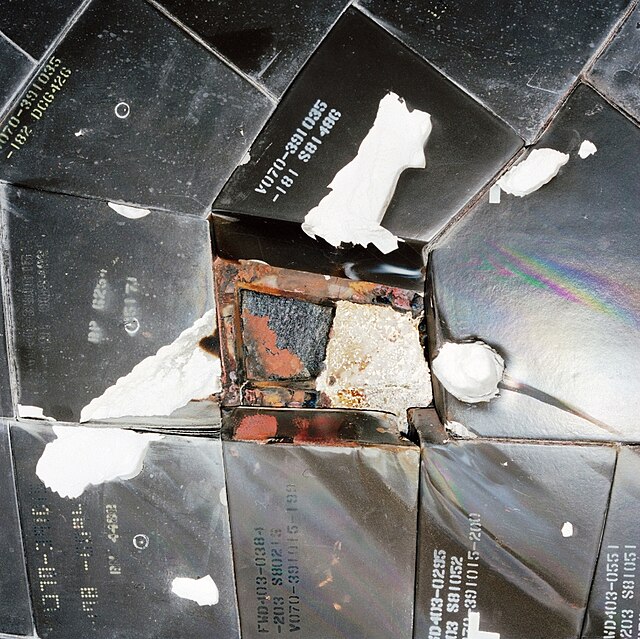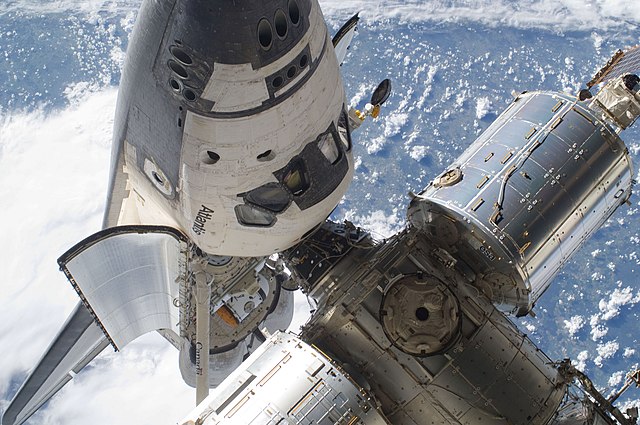STS-38 was a Space Shuttle mission by NASA using the Space Shuttle Atlantis. It was the 37th shuttle mission, and carried a classified payload for the U.S. Department of Defense (DoD). It was the seventh flight for Atlantis and the seventh flight dedicated to the Department of Defense. The mission was a 4-day mission that traveled 3,291,199 km (2,045,056 mi) and completed 79 revolutions. Atlantis landed at Kennedy Space Center's Shuttle Landing Facility's runway 33. The launch was originally scheduled for July 1990, but was rescheduled due to a hydrogen leak found on Space Shuttle Columbia during the STS-35 countdown. During a rollback to the Orbiter Processing Facility Atlantis was damaged during a hail storm. The eventual launch date of November 15, 1990, was set due to a payload problem. The launch window was between 18:30 and 22:30 EST. The launch occurred at 18:48:13 EST.
Atlantis in orbit; in-flight photography of this Department of Defense support mission is limited
Standing: Charles D. Gemar, Robert C. Springer, Carl J. Meade Seated: Frank L. Culbertson Jr., Richard O. CoveySpace Shuttle program← STS-41 (36)STS-35 (38) →
Atlantis (right) and Columbia pass
Sunlight on the ocean
Space Shuttle Atlantis is a retired Space Shuttle orbiter vehicle which belongs to NASA, the spaceflight and space exploration agency of the United States. Atlantis was manufactured by the Rockwell International company in Southern California and was delivered to the Kennedy Space Center in Eastern Florida in April 1985. Atlantis is also the fourth operational and the second-to-last Space Shuttle built. Its maiden flight was STS-51-J made from October 3 to 7, 1985.
Atlantis in orbit in 2010, during STS-132
Space Shuttle Atlantis as it transits the Sun
Melted aluminum plating on Atlantis's right wing underside (STS-27)
Atlantis docked to the International Space Station during STS-132 mission








